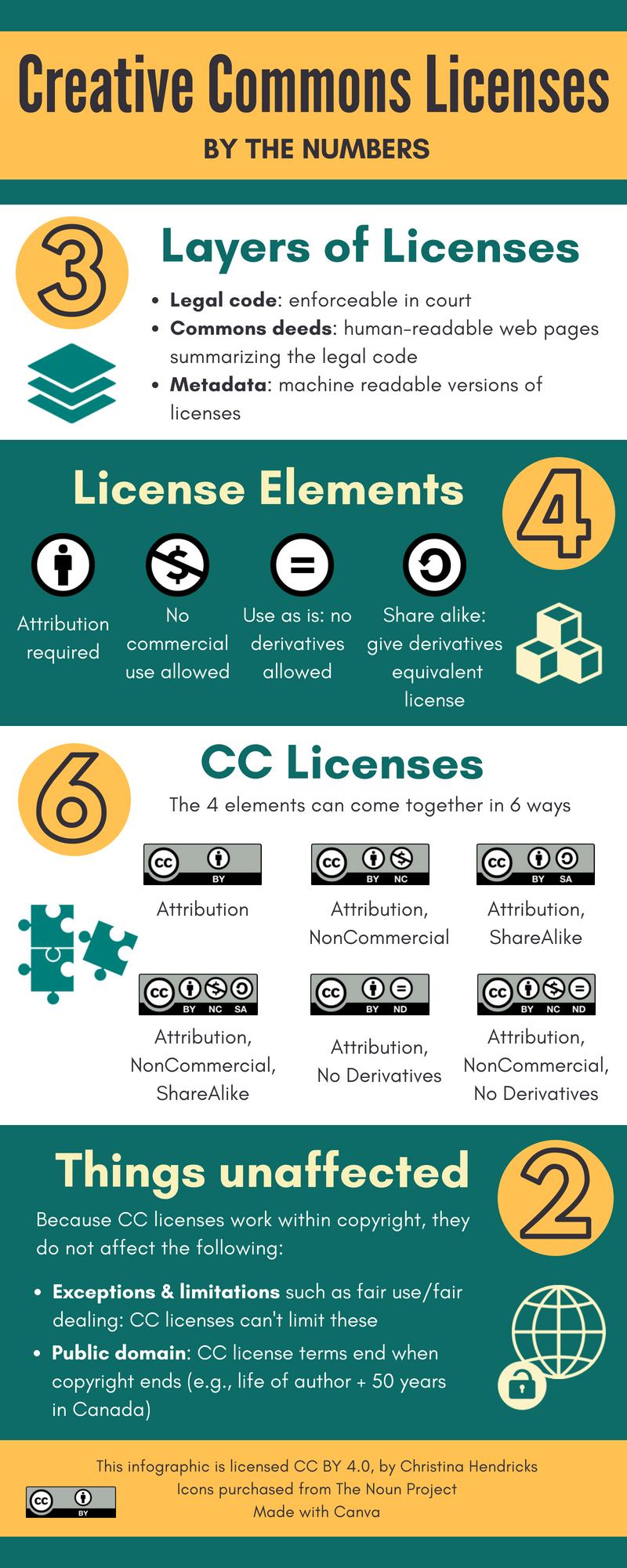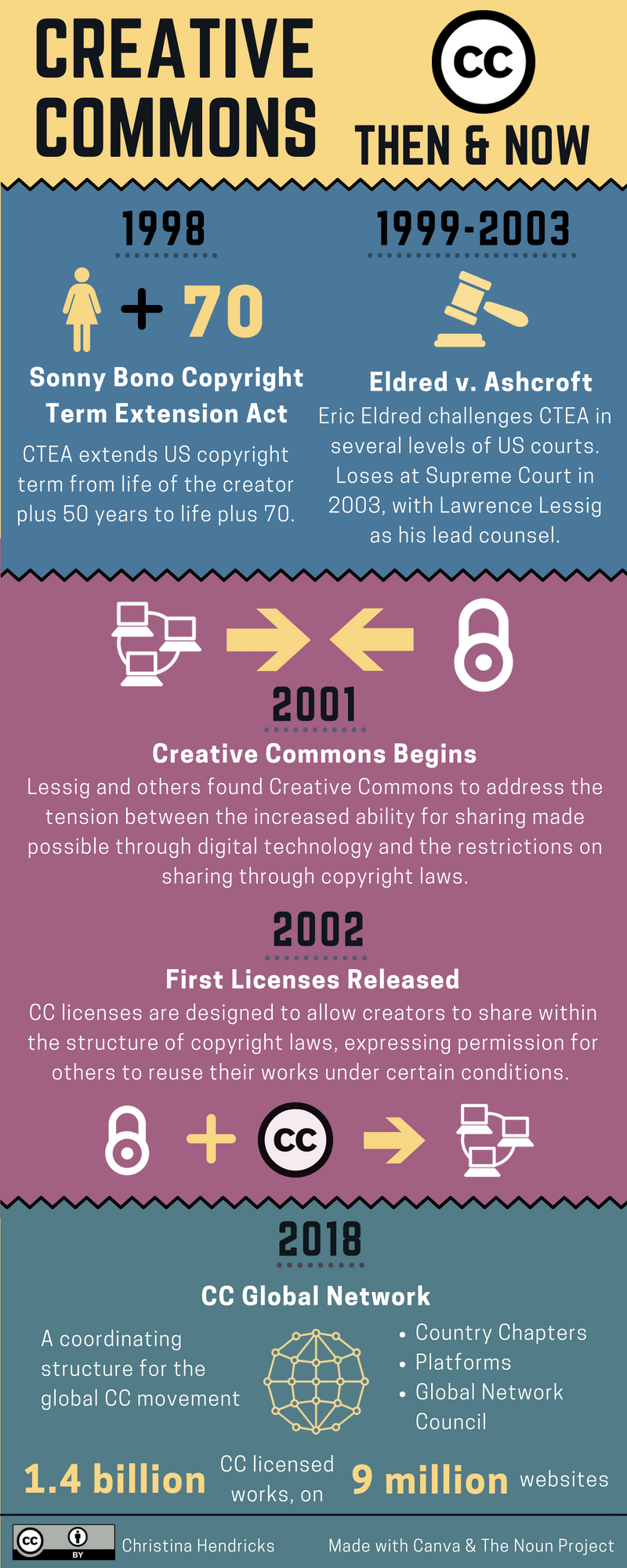For the Creative Commons Certificate course I’m taking, one of the discussion prompts is:
Many educational resources are available to faculty and students for free or in a manner that they perceive as being free. These include resources available through library database subscriptions and most of the pages on the public internet. Many of these resources are highly engaging and some are even effective at supporting student learning. What risks are associated with adopting these resources? What is the role of these free resources in the context of efforts to create, adopt, use, and improve open educational resources? (see all assignments & discussion prompts for the course)
Here is what I wrote in the discussion board; I’m posting it here for future reference since I’m guessing that content in the course disappears into the ether after the course is finished.
I use a lot of these kinds of resources when I teach my courses in philosophy. I try to keep the costs for students as close to zero as possible, and because of the lack of OER in philosophy, most of how I do that is through resources like these. Depending on what I’m teaching, there are a number of texts that are in the public domain, but that’s only if we’re discussing things that are fairly old. Most of the other things I assign are free to read but not openly licensed (e.g., journal articles our library has subscriptions to, other academics’ website and blog posts, newspaper and magazine articles, podcasts, YouTube videos that aren’t CC licensed, the Stanford Encyclopedia of Philosophy…).
Risks and downsides of using these kinds of resources
I can think of a number of downsides, not all of them “risks” necessarily, but certainly things that aren’t as useful for teaching and learning as OER.
Risks
The one that comes to mind first is that things can disappear or change quickly. I have had it happen where I put a resource on the syllabus and then by the time we got to that point in the term the resource had either moved to a different place or disappeared. And library subscriptions aren’t stable either, given that library budgets are strained with increasing subscription costs.
Another one is kind of subtle: without careful discussion of copyright and permissions, students may get the sense that because I’m using such resources in my course, they can also use them however they want. I often ask students to consider posting some work publicly on the course blog (they can choose to do so or not, as they wish), and it’s sometimes hard going to clarify what they can post publicly and what they can’t. I think it’s very useful to have a conversation about copyright and fair dealing and how those work in educational contexts, and how they affect what students can post publicly, when using “free” resources like this.
In addition, we are in somewhat of a limbo in Canada right now with fair dealing, due to a recent court case with York University A number of colleges and universities are now wondering just what exactly they should be doing to protect themselves against similar lawsuits related to fair dealing, where they can be liable for many millions of dollars. So there is a potential risk around using materials under fair dealing.
Downsides
These are things that I wouldn’t necessarily call risks, but are downsides to such materials.
Because these materials are not openly licensed in a way that allows for revisions, one can’t adjust them to fit one’s own context or update them oneself. One has to take the good with the bad, and what one wants along with what one doesn’t. Frequently I ask students to do things like: read sections 2.1-2.3, 2.5, 2.8-2.9…etc. It’s confusing and annoying, and it would be much easier if I could just copy the sections I want and put them together in a new document. I could do that with OER.
As noted in the modules this week, if these works aren’t openly licensed one loses another great benefit of OER: students being able to update the works themselves. Just as we see with people making suggestions about the materials in this course here (on the content documents that are open for comment), one can do that in one’s own course–students can often find new, relevant information to include, new links to include, can reword things so they’re better understandable to other students, can write new materials to add in, etc.
A downside with some library resources that may change in the future: sometimes I assign chapters from books that the library has digital copies of, which is great (students don’t have to go to the library to make a paper copy of a chapter on reserve). But the ebook platforms can be awful to read on, very cumbersome and sometimes bad on mobile (depends on the platform). It would be great if I could just post a direct PDF on my website but that’s not always allowed (depends on the particular license agreement with the publisher).
Another issue with library resources: license agreements with publishers are widely different and incredibly complicated. Our library keeps a database of such agreements and when you click on a digital resource you can find out the various permissions, but they differ depending on the particular publisher (see, e.g., Licensed Materials on this library guide for instructors). So one has to check every single digital resource from the library to see what one can do with it (can you make paper copies? Can you post a PDF? Can you only post a link? Where can you post it? etc.).
And some licenses for library materials are less permissive than exceptions to copyright. Here is a quote from the page linked to just above: “If the terms of a licence prohibit uses that would otherwise be permitted by an exception in the Copyright Act, then the terms of the licence apply.” I don’t quite get that because if there is an exception to copyright then why can the copyright holder restrict the terms like this?
Role of these resources in efforts to create, adopt, improve OER
I guess mostly what can happen is that people get confused that OER are the same as free of cost resources like these. So I think pointing out the risks and downsides are important so people can see not just the differences with OER, but why OER are better!
From others’ posts in the discussion board, as well as further thought, here are some more ideas:
- Students lose access to some of the “free” resources when they finish a course or leave an institution.
- Resources that are free of cost but not openly licensed may not be able to be revised in order to make them more accessible.
- Free resources may not be free of cost to the institution: e.g., subscriptions to journals through the library can be very expensive, and as the costs rise then libraries have to cut the number of subscriptions they have.
- Some kinds of free resources require that people sign up for accounts, so as teachers we may be requiring students to give up some of their privacy in ways that they (and we) may not fully understand.


